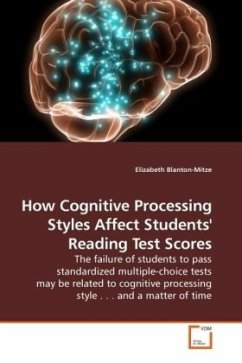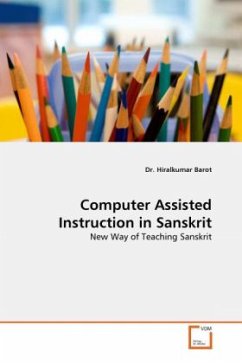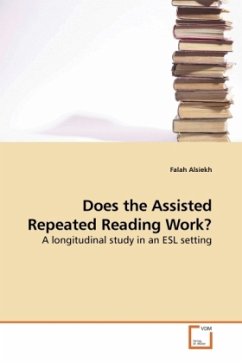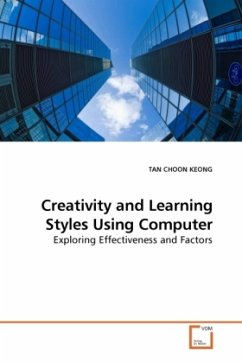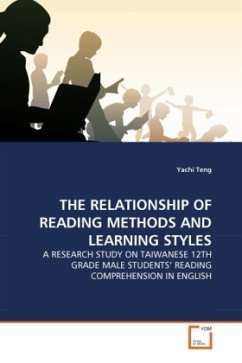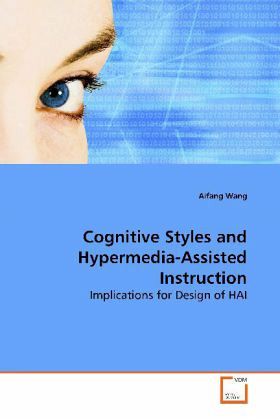
Cognitive Styles and Hypermedia-Assisted Instruction
Implications for Design of HAI
Versandkostenfrei!
Versandfertig in 6-10 Tagen
52,99 €
inkl. MwSt.

PAYBACK Punkte
26 °P sammeln!
With advances in computer technology, hypermedia hasplayed a vital role in the delivery of instruction.The use of hypermedia as a learning medium hasprompted much research in the field of educationaltechnology. Different types of hypermedia-assistedinstructions have been designed, but not all learnershave benefited from the instruction. What factors maycontribute to individuals success or failure in ahypermedia environment? Concerning the flexibilityand nonlinearity of hypermedia, perhaps cognitivestyle of field dependence/independence (FDI) is sucha factor that may create a difference. This b...
With advances in computer technology, hypermedia has
played a vital role in the delivery of instruction.
The use of hypermedia as a learning medium has
prompted much research in the field of educational
technology. Different types of hypermedia-assisted
instructions have been designed, but not all learners
have benefited from the instruction. What factors may
contribute to individuals success or failure in a
hypermedia environment? Concerning the flexibility
and nonlinearity of hypermedia, perhaps cognitive
style of field dependence/independence (FDI) is such
a factor that may create a difference. This book
examines the effects of instructional aids and FDI on
students structural knowledge performance in a
hypermedia environment. It aims to evaluate whether
the instructional aids help students with different
cognitive styles of FDI acquire a richer
understanding of technology applications in Education
course content. The findings of the book will
contribute to design guidelines for instructors,
instructional designers and developers. It can
provide valuable insights for educators and offer a
framework for future research.
played a vital role in the delivery of instruction.
The use of hypermedia as a learning medium has
prompted much research in the field of educational
technology. Different types of hypermedia-assisted
instructions have been designed, but not all learners
have benefited from the instruction. What factors may
contribute to individuals success or failure in a
hypermedia environment? Concerning the flexibility
and nonlinearity of hypermedia, perhaps cognitive
style of field dependence/independence (FDI) is such
a factor that may create a difference. This book
examines the effects of instructional aids and FDI on
students structural knowledge performance in a
hypermedia environment. It aims to evaluate whether
the instructional aids help students with different
cognitive styles of FDI acquire a richer
understanding of technology applications in Education
course content. The findings of the book will
contribute to design guidelines for instructors,
instructional designers and developers. It can
provide valuable insights for educators and offer a
framework for future research.




